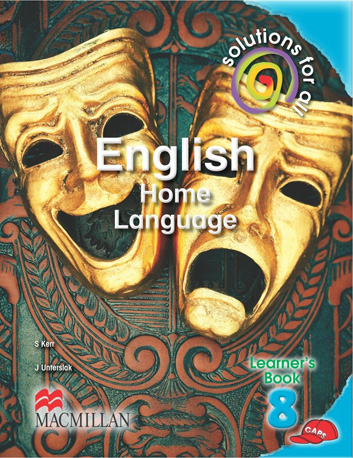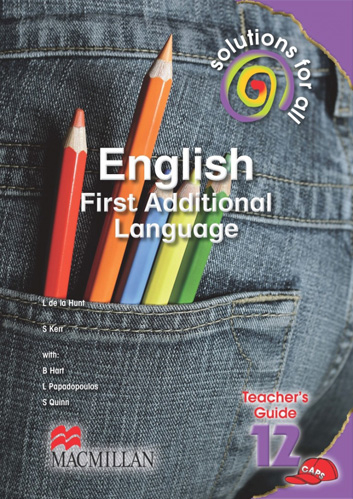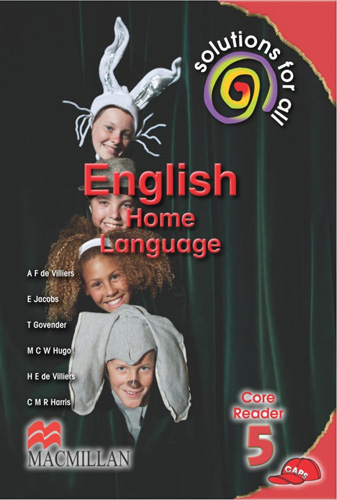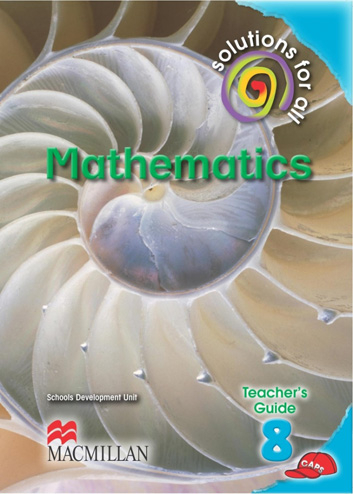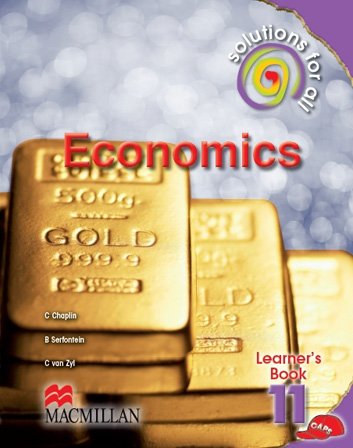
Solutions For All Economics Grade 11 Learner's Book
| Publisher | Macmillan South Africa |
|---|---|
| Print Price | R 391.95 |
| Print ISBN | 9781431010523 |
| WPDF Price | R 313.95 |
| WPDF ISBN | 9781431018086 |
The Solutions for all programmes have been developed to support the content (knowledge, concepts and skills) contained in the National Curriculum Statement (NCS), as organised in the new Curriculum and Assessment Policy Statement (CAPS). The Solutions for all programmes have been organised to support teaching and learning in the classroom by presenting the material to be taught and practised in the classroom in 30-60 minute lessons.
How does the Learner’s Book assist learning and teaching?
- Every topic opener page shows a summary of what will be covered in that topic – What you will learn about in this topic. It also contains a Let’s talk about this topic feature, which brings the learner’s mind into the classroom through lively discussion of topics relevant to their daily lives. Once they can relate to the topic being introduced, they will grasp the concepts more easily.
- Prior knowledge is important and the following features help with this assessment:
- Discuss the issues raised in the What you know already feature.
- Test the learners using the Check myself questions (the answers appear in the Teacher’s Guide).
- Any learners who are still struggling with the content would benefit from the remedial questions in Extra Practice Activities at the end of every topic. This will help them reach the same level of understanding of their fellow learners before proceeding with the lesson.
- There are Word Banks which are placed at the beginning of each new section of work so that new words and terms can be discussed with learners before starting with the new content. This way a lesson is not interrupted to explain terms that some learners don’t understand. The simple explanations are therefore also all in one place, instead of dotted through the text as is often found in other textbooks. A full list of all the words is also provided at the end of the Learner’s Book.
- The What you still need to know content is as required in the CAPS document, and is broken down into brief, easy-to-understand sections with bold colourful headings, making the work more manageable and easier to follow.
- Most content is visually reinforced through tables, photos, illustrations, diagrams, flow charts and graphs throughout the Learner’s Book, so that learners can better understand the content visually, verbally and through the written word. This includes cartoons that are often found in the Business section of newspapers which take a satirical look at the economic climate of our country.
 The Learner’s Book contains text which is appropriate for learners in a diverse society and promotes social transformation. The book contains a unique feature which highlights the economic issues of the day, bringing the real-life in South Africa into context.
The Learner’s Book contains text which is appropriate for learners in a diverse society and promotes social transformation. The book contains a unique feature which highlights the economic issues of the day, bringing the real-life in South Africa into context.- Classroom Activities allow learners to test their knowledge of what they have learnt so far.
- The Homework Activities cover all levels of ability and understanding.
- All activities – classroom, homework and extra practice – have marks per question so that the learners are always aware of how much information to provide and how their answers will be marked.
- The Summary at the end of every topic allows learners to identify the main points discussed in the topic.
- At the end of each term, the content of that term is revised in a Revision Test provided for the learners. This is a useful tool for the learners to use when studying this subject at home. The answers are provided in the Teacher’s Guide and be copied and handed out to the learners once they have completed the revision questions. (The rest of the Controlled Tests, Formal Assessment Tasks and Exam Papers are provided in the Teacher’s Guide.)
How does the Teacher’s Guide assist learning and teaching?
- The Annual Teaching Plan breaks the CAPS curriculum into terms and then topics, with page references to the Learner’s Book and Teacher’s Guide, how long should be spent on each topic and the forms of assessment per topic.
- The Control Tests and Examinations follow the same outline and format as the exams provided by the Department of Basic Education and is good practice for learners.
- There are tips for teachers on how to deal with barriers to learning.
- Every topic starts with background information for the teacher, with useful websites and other references to enhance the teaching experience. It also contains tips for teaching the particular topics.
- Every activity starts with teaching hints on how to help the learners complete the questions.
- Answers to all activities are provided, including how the marks should be allocated.
- The activity questions are categorised according to cognitive levels so that teachers can easily identify which questions would work best with learners with different learning abilities. Questions have been formulated to include all of Bloom’s taxonomy words and question formats.
How does this course deal with assessment?
- The Teacher’s Guide contains basic guidelines on how to perform assessment in Economics.
- Questions have been allocated into lower order, middle order and higher order categories so that all three cognitive levels are included in activities and revision exercises.
- A full Programme of Assessment is provided, indicating the types of assessment and when they should take place in terms of the CAPS document. Assessment activities are also provided: formal case study, project and research tasks, two Controlled Tests and mid-year and end-of-year examinations.
- The DBE states that activities and assessment in this Learner’s Book “are clear and will be engaging for learners in this grade. They are clearly related to the topic coverage and provide for interesting variety, while being clearly scaffolded”.
